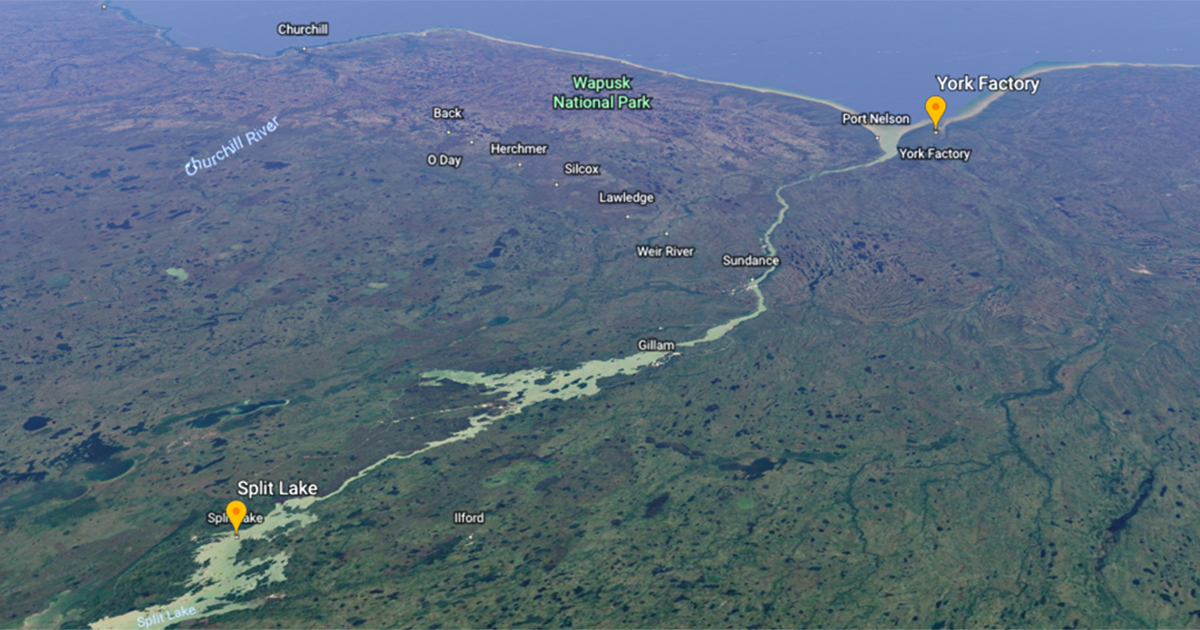Read the first part of our reflection on walking and pilgrimages as an expression of faith.
Pilgrimage has a particularly special spiritual significance amongst many Indigenous communities in Canada.
Bishop Larry Beardy, a member of the Tataskweyak Cree Nation in Split Lake, Manitoba, highlights the importance of a pilgrimage in the Cree tradition.
“We come from a history [where] we had the canoe or the water transportation, but most of the time we had to walk to go from point A to point B,” Bishop Beardy says. “So we understand what walking in a natural sense, anyway. But the concept of being on a pilgrimage is very instrumental in the Cree way.
“My ancestors talk about [how] we have a spiritual journey on the earth that we live on, and they always made reference to that. We finish that journey on the land when somebody dies, and we leave it and continue our spiritual journey in another realm.”
In the late 1800s and early 1900s, the Cree learned of Christianity through missionaries, including those from the Church of England. Bishop Beardy’s people were influenced by missioners at York Factory, a settlement and trading post of the Hudson’s Bay Company.
Two years before the signing of Treaty 5 in 1908, a mission was established in Split Lake. Beardy’s grandfather, Joseph Kitchkeesik, was a lay reader at the mission. The mission, which did not have ordained clergy, could not offer the Holy Eucharist. One year, around Christmas, Kitchkeesik walked more than 300 km—along the shore of the Nelson River from Split Lake to York Factory—just to receive the sacrament.
“That’s how much he wanted to have the Holy Eucharist. […] He walked to get a sacrament, because it was not available in my community in those days,” Bishop Beardy said. “We rarely had a visit from a minister, or even a bishop. People lived their life without the sacrament.”
Such conditions, the bishop added, still exist today in many Indigenous communities. In his own northern Manitoba area mission, a lot of communities have no clergy at all, and many youth are unbaptized.
Ensuring that his people have to access sacraments such as baptism and the Holy Eucharist is a major priority for Bishop Beardy.
“It seems like we have to walk the journey to obtain what we dream about,” he said. “Some people think that baptism and getting the Eucharist is a simple thing to have, in our day and age in the Anglican Church. But to tell the rest of the Anglican Communion that is not so—a lot of our communities feel like we’ve been abandoned, left out. Missionaries came and left. But now we yearn to have those sacraments in our communities.”
Walking the dream
In 2012, Beardy organized a 60-km walk to Pinawa, Manitoba, to attend the 2012 Sacred Circle gathering. The walk was called Walking the Dream, and it was organized to raise awareness of the crises in Indigenous communities, as well as their journey towards self-determination. Hundreds of Indigenous Anglicans participated in the walk.
At that time, Beardy compared what Indigenous people were going through, to the story of Moses guiding his people through the wilderness. Today, he says, that story is just as relevant.
“That theme about the Exodus with Moses leading his people, it’s a theme that is always looked at, because of the journey that the people have made from slavery, from assimilation and colonization in Egypt,” Beardy said. “They were set free from there through the wonderful works of God and the protection that God provided. It’s always used as a story to inspire our Indigenous people in Canada, and it brings us hope.”
The metaphor of Indigenous and non-Indigenous people walking on a journey together has become foundational in discussions of reconciliation.
In moving towards reconciliation and self-determination, Beardy suggests that Indigenous Anglicans are taking a leadership role much as Moses did during the Exodus.
“We have made some progress in that journey, and monitor that the vision of the elders is being realized,” Bishop Beardy said. “Now we have work to do in this journey that we’re on. Through God’s guidance and protection, we will continue on this journey with our Creator … with our Christian brothers within the Anglican Church of Canada, and also our ecumenical brothers and sisters in other faiths.”
Interested in keeping up-to-date on news, opinion, events and resources from the Anglican Church of Canada? Sign up for our email alerts .

